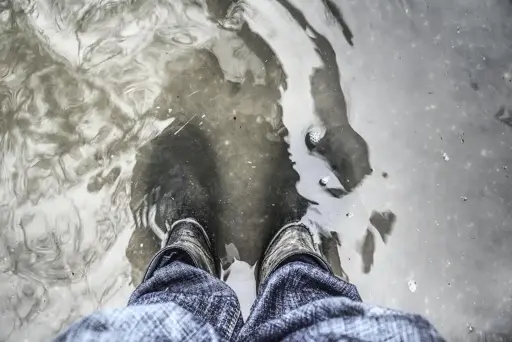Finding water in your cellar can be a homeowner’s worst nightmare. Whether it’s a small puddle or a full-on flood, dealing with the problem quickly and effectively is crucial to prevent long-term damage to your property and belongings. This guide will walk you through the essential steps and tools for draining water from your cellar, ensuring you can restore your basement to a dry and safe space.
Why is my cellar flooding?
Before you start pumping, it’s important to understand the cause of the flooding. Identifying the source will help you take preventative measures to avoid future incidents. Common culprits include:
Heavy rainfall: Excessive rain can saturate the ground, increasing hydrostatic pressure on your cellar walls and foundation, which can lead to seepage.Poor drainage: Clogged gutters, downpipes, or a poorly graded yard can direct water towards your home’s foundation instead of away from it.Cracks in the foundation: Small cracks can be a point of entry for water, especially during periods of heavy rain.Plumbing issues: A burst pipe or a leaking hot water tank can quickly flood a cellar.High water table: If you live in an area with a naturally high water table, groundwater can easily seep into your cellar.
Getting started: safety first!
Your safety is paramount. Do not enter a flooded cellar without first taking these precautions:
Cut the power: Before you do anything, switch off the electricity to the affected area from your main fuse box. Water and electricity are a dangerous combination. If the fuse box is in the cellar, call a qualified electrician to safely shut off the power for you.Assess the depth: Use a stick or broom handle to gauge the depth of the water. If the water level is high (e.g., above your knees), it may be wise to contact a professional for assistance.Check for contaminants: Be aware that the water could be contaminated with sewage or chemicals. Wear waterproof boots, gloves, and protective eyewear.
Finding the right tools for the job
Once you’ve addressed the safety aspects, you’ll need the right equipment to get the job done efficiently. The most critical tool for this task is a submersible pump.
Submersible pumps: These pumps are designed to be fully submerged in the water. They are highly efficient at moving large volumes of water quickly. For cellar drainage, look for a pump with a ‘dirty water’ or ‘drainage’ classification, as these can handle small solids that might be present in the floodwater.Hoses: You’ll need a suitable discharge hose to direct the water away from your property. Ensure the hose is long enough to reach a safe drainage point, such as a garden, a storm drain, or a sump pit, and that it’s securely attached to the pump.
A step-by-step guide to draining your cellar
Follow these steps for a systematic and effective drainage process:
Place the pump: Position the submersible pump in the deepest part of the cellar. Make sure it is stable and won’t tip over during operation.Connect the hose: Attach the discharge hose to the pump and run it to your chosen drainage location. The further away from the house, the better. You don’t want the water to simply flow back into the cellar.Power up: Plug the pump into a safe power source (ideally a GFCI outlet) and switch it on. The pump will begin to pull water from the cellar and discharge it through the hose.Monitor the process: Keep an eye on the pump to ensure it is working correctly. It may need to be repositioned as the water level drops to get to other low-lying areas.Remove remaining water: Once the pump has done its job and the water level is too low for it to operate, you’ll need to manually remove the remaining water. Use buckets, towels, and a wet-dry vacuum cleaner to get the floor as dry as possible.Clean and dry: After the water is gone, it’s crucial to thoroughly clean the area. Remove any damaged items and scrub the floors and walls to prevent mould and mildew. Use fans and dehumidifiers to ensure the space is completely dry.
How to prevent future flooding
Draining your cellar is only half the battle. To avoid another flood, take these preventative actions:
Install a sump pump: A permanent sump pump system is an excellent long-term solution. It’s designed to automatically activate when water reaches a certain level, directing it away from the foundation.Seal cracks: Inspect your foundation and basement walls for any cracks and seal them with a hydraulic cement or a specialised sealant.Improve exterior drainage: Ensure your gutters are clean and free of debris.Install downspout extenders to direct rainwater at least 1.5 metres away from your home’s foundation.Check that the ground around your home slopes away from the foundation. If it doesn’t, consider adding soil to create a positive grade.
By following these steps, you can effectively manage a flooded cellar and take proactive measures to protect your home from future water damage. A dry cellar is a valuable asset, and with the right approach and equipment, you can maintain a safe and healthy environment for years to come.
From Canary via this RSS feed


